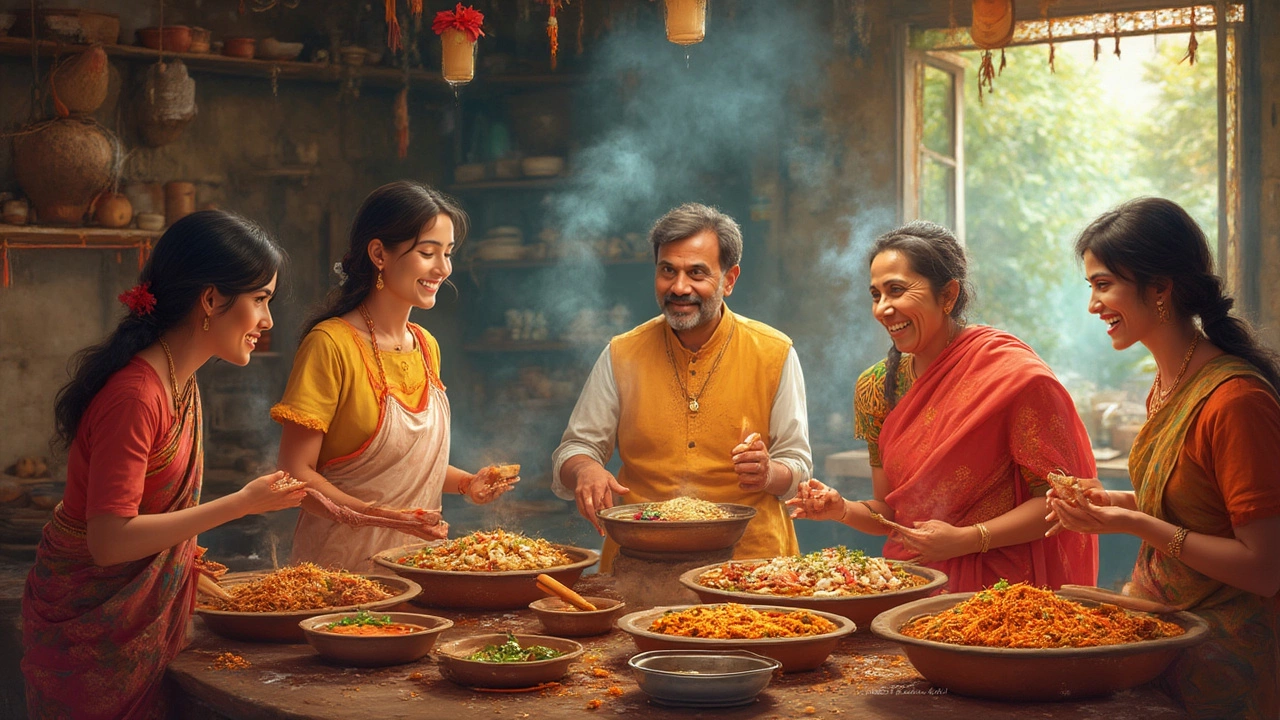
What is Indian Food? Exploring Flavors, History, & Dishes
Discover what makes Indian food unique—its flavors, rich history, regional dishes, cooking secrets, and why it's loved worldwide. A handy guide for curious foodies.
India is a kitchen of colors, spices, and stories. Whether you’re a first‑timer or a seasoned fan, there’s a plate that fits every mood. From buttery naan to tangy rasam, each bite tells a part of the country’s cultural map. This guide breaks down the must‑try dishes, the regions they belong to, and easy ways to bring them into your own kitchen.
Most people think of curry when they hear “Indian food,” but the reality is way richer. You’ll find creamy dal, smoky tandoori, crisp dosas, and sweet jalebi—all using a handful of core spices like cumin, coriander, turmeric, and chili. The magic happens when those spices meet local ingredients—rice in the south, wheat in the north, coconut in the east, and peanuts in the west. Knowing the basics lets you pick dishes that match your taste and cooking comfort.
Start with a few easy staples. A simple dal tadka (tempered lentils) takes just 20 minutes and needs only lentils, onions, garlic, and a splash of ghee. Pair it with basmati rice or a warm roti for a complete meal. If you like heat, try a quick paneer tikka—cubes of cheese marinated in yogurt and spices, then grilled or baked. These dishes give you a solid base for exploring more complex flavors later.
North India is known for its rich breads and dairy‑heavy dishes. Think buttery butter chicken, thick paneer butter masala, and fluffy naan or paratha. The climate favors wheat, so flatbreads dominate the table. A must‑try is chole bhature—spicy chickpeas with fluffy fried dough.
South India lives on rice and lentils. Dosas (thin crepes) and idlis (steamed rice cakes) are breakfast icons, served with coconut chutney and sambar, a tangy lentil stew. The heat is often lifted with fresh curry leaves and mustard seeds.
East India loves sweets and fish. Mishti doi (caramel‑sweet yogurt) and sandesh (soft cheese sweets) showcase the region’s love for dairy. For savory, try macher jhol (mustard‑spiced fish curry) or paturi (fish wrapped in banana leaf).
West India offers a bold, tangy palate. Gujarat’s dhokla—steamed fermented chickpea cake—hits the sweet‑sour spot, while Maharashtra’s vada pav (spicy potato fritters with bread) feels like a street‑food hug. The coastal areas love coconut, creating dishes like Goan fish curry.
First, stock a few basic spices: cumin seeds, mustard seeds, turmeric, red chili powder, and garam masala. A small jar of ginger‑garlic paste saves time. Next, pick a recipe with familiar ingredients—dal, vegetable curry, or a simple biryani. Follow the tempering step (tadka) where spices sizzle in hot oil; it’s the flavor backbone.
Don’t worry about authentic equipment. A regular skillet works for most dishes, and a pressure cooker speeds up lentils. If a recipe calls for a tandoor (clay oven), you can finish the dish under a hot broiler or grill pan to get that charred edge.
Finally, taste as you go. Indian cooking balances sweet, salty, sour, and spicy. A squeeze of lemon, a pinch of sugar, or a dash of chili can fix a flavor that feels off. Serve your creations with rice, roti, or even simple bread to soak up the sauce.
Ready to explore? Grab a spice box, pick a dish from the list above, and give it a go. You’ll soon see why Indian dishes are a worldwide favorite—every bite feels like a small celebration of culture, comfort, and adventure.

Discover what makes Indian food unique—its flavors, rich history, regional dishes, cooking secrets, and why it's loved worldwide. A handy guide for curious foodies.